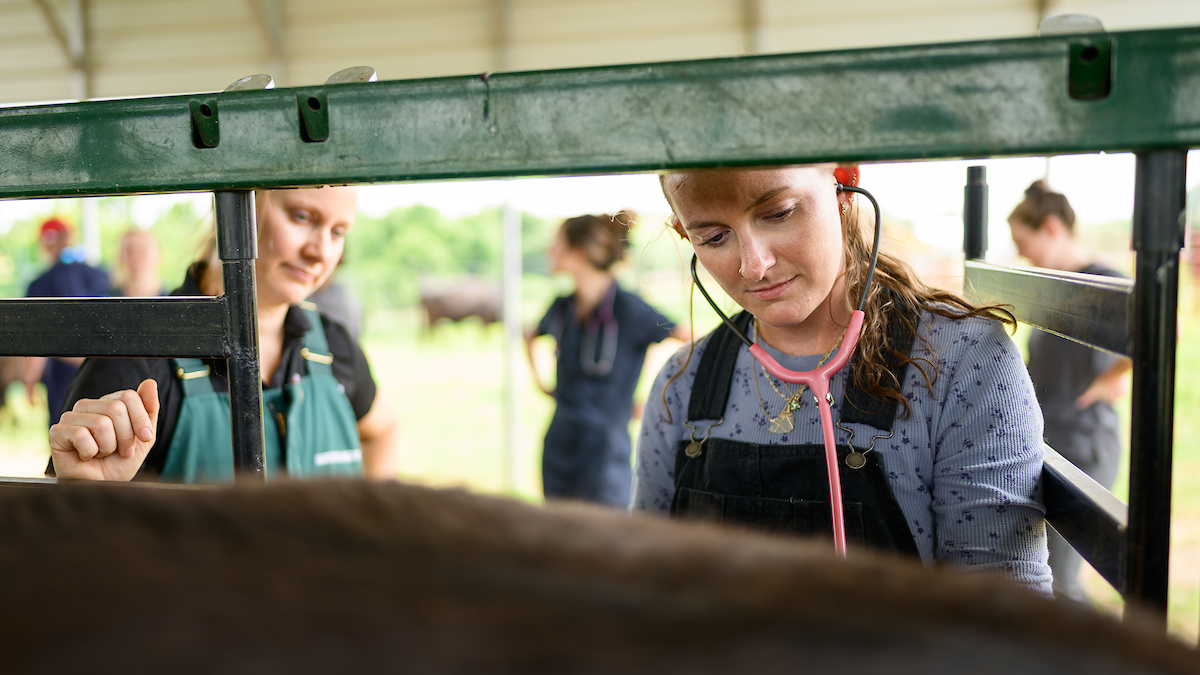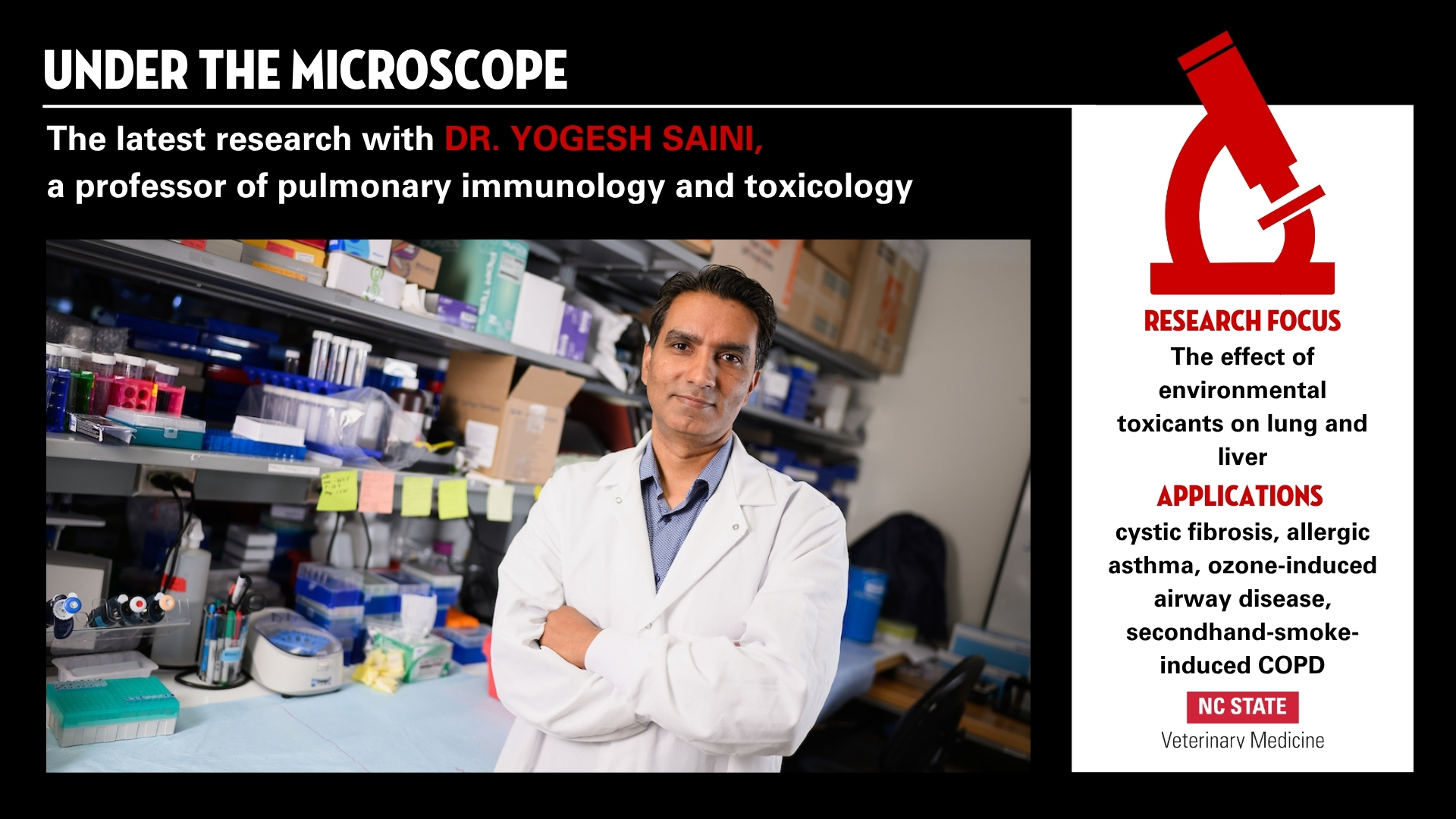Pets of NC State Veterinary Medicine Staff, Faculty Help Train Future Veterinarians
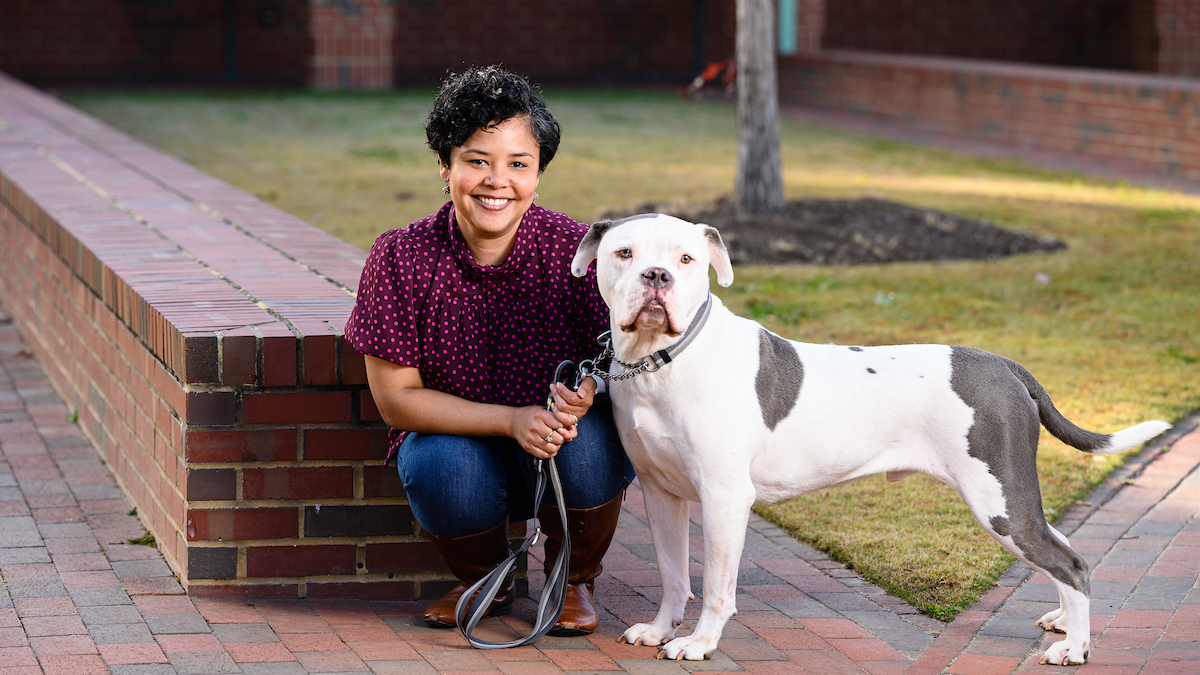
Moose the dog doesn’t know the faces smiling at him and the hands touching him belong to NC State College of Veterinary Medicine students.
He doesn’t know that the people taking his pulse and examining his ears are practicing their important history-taking, examination and client interaction skills together for the first time.
All Moose knows is that he got to come to work with his owner, Gwen McKeever, a CVM administrative program assistant, to be the center of attention for hours and to hear over and over again that he’s a very good boy.
Moose, an American bully, is just one of many beloved pets that belong to members of the CVM community and play the part of patients to help educate future veterinarians.
“He just loves to do it,” McKeever says of Moose. “It’s just so much fun for him. I pack a backpack with snacks and toys for him when we go, and I have to wait until the morning of the lab to pack it because, when he sees it, he’s ready to go. I can barely put his harness on because he’s bouncing up and down excited.”
The class that Moose frequents is part of a third-year course called VMC957: Introduction to Clinical Practice. The class also employs actors who play the roles of owner and use scripts to let the students know what’s “wrong” with the pets.
Knowing an animal’s behavioral and medical history is crucial to the experience, says Amy Snyder, associate clinical professor in small animal primary care.
“We are very intentional with regards to the pets we choose,” she says “We focus on finding patients who are cooperative and comfortable being examined because we want the experience to be beneficial for both the student and the pet. Moose is a great example. He is so gentle with the students and is happy to be examined because he loves all the attention.”
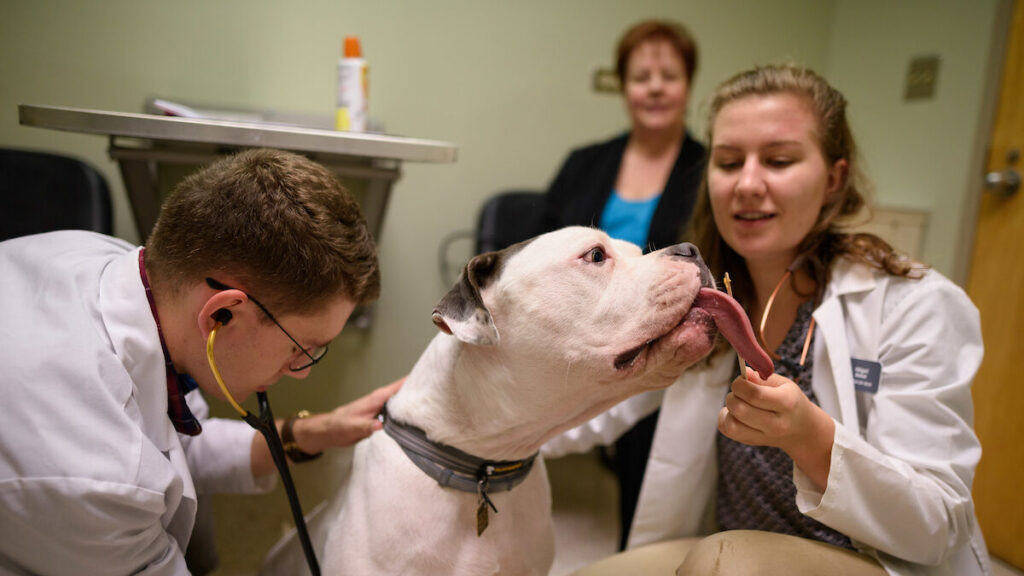
Miley, a dachshund mix, is another volunteer. At 12 years old, “he’s the little old man,” says owner Kimberly Knapp, a medical support technician at the NC State Veterinary Hospital.
“He just has a really great demeanor, calm, loves people, will sit there and let you do whatever you want to him,” Knapp says. “He’s a good dog to learn on. Being able to use our pets makes it easier. We know our animals. We know students are going to get a good base to practice on. I love that I can bring him in. He loves coming in, too.”
Snyder and Mariea Ross-Estrada, CVM assistant clinical professor, coordinate finding the animals and the actors for the third-year course. Snyder’s dog, Nellie, has filled in some schedule holes when needed.
“Our pet volunteers provide the students with a more realistic learning experience that simply would not be possible otherwise,” Snyder says. “We are grateful for Moose, Miley and so many more for making this possible.”
NC State veterinary students also have communications courses to practice talking to clients (who are also actors), but those classes use stuffed animals. Students examine real animals in another class, but the exams are in front of an instructor, not a simulated owner.
“For the students, this is the first time they are expected to take the history with an actor playing the role of owner who has a script, and the student is performing a physical exam in front of that owner and explaining it to the owner and making medical recommendations on the spot,” Snyder says. “It’s the first time we’re asking students to pull all those things together.”
Sometimes the pets of CVM employees participate in research projects as well, helping faculty members and graduate students better understand diseases.
“It’d be really hard if people weren’t volunteering their animals to help,” says Shelly Vaden, professor of internal medicine. “It would take us a lot longer to get the information we get from these pets. For instance, there was a call for dogs that are good sniffers because they wanted to test the sense of smell. There was one calling for dogs that were the right size to wear vests that they could use to detect and model their movement.”
At least once, Vaden and her dog, Bugatti, participated together in a project that studied the effects of environmental toxins.
“We both wore wristbands, well, a wristband as a collar, that gathered data, and we both had to provide samples over a period of time,” she says. “They were looking at dogs being sentinels for what toxins humans are exposed to, and it ended up in a published veterinary journal study. They found out that animals are exposed to the same things we are, so if they were monitoring dogs, they would pick up the toxins we were exposed to as well.”
Vaden says her dog loves going to work with her to participate in important projects in regenerative medicine, infectious disease, comparative genetics and neurobiology that advance the health of animals and humans.
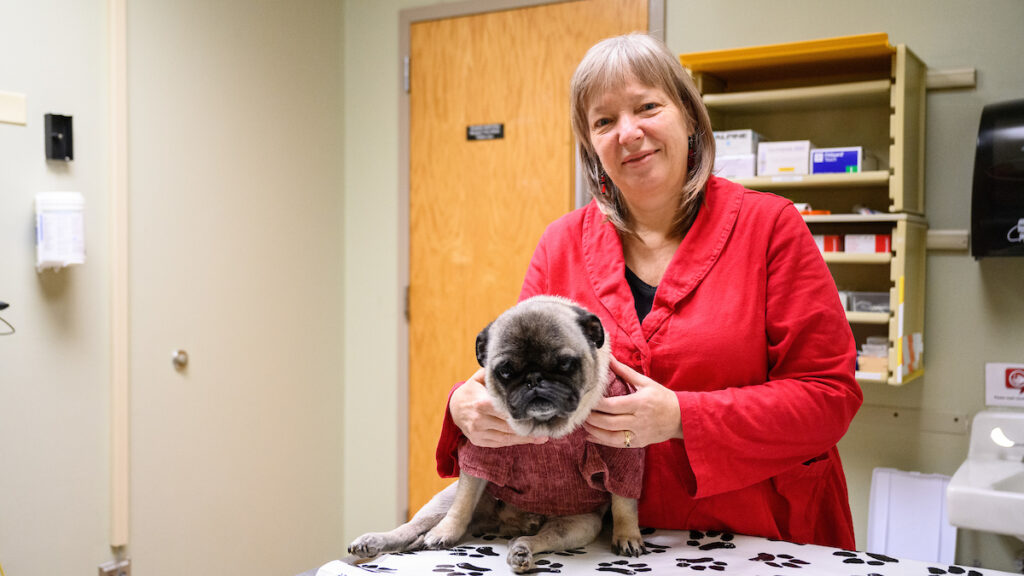
“When he gets called, he’s like, ‘Yes, come on!’ ” she says. “You want them to be able to be there and help provide for the information that will help us understand and treat animals more thoroughly and effectively in the future.”
The top-notch training of future veterinarians is a critical reason the CVM is consistently ranked as one of the top veterinary educational programs in the country. And Moose, Miley, Nellie and scores of other employee pets are crucial to that training.
“Several students have told me that Moose is very patient, and he’s so easy to work with,” McKeever says. “They can tell that he likes being there. I know he’s probably the most excited participant. Honestly, it’s difficult to get him to leave campus at the end of my workday.”
~Burgetta Eplin Wheeler
- Categories:

